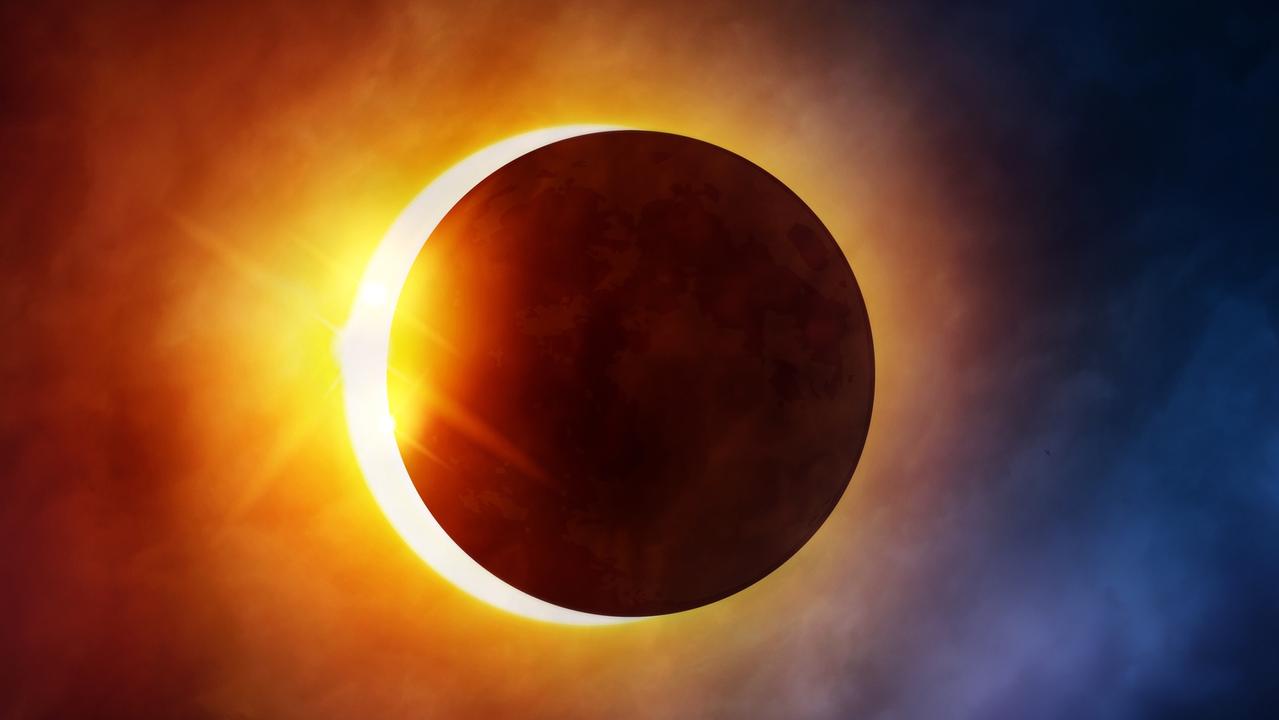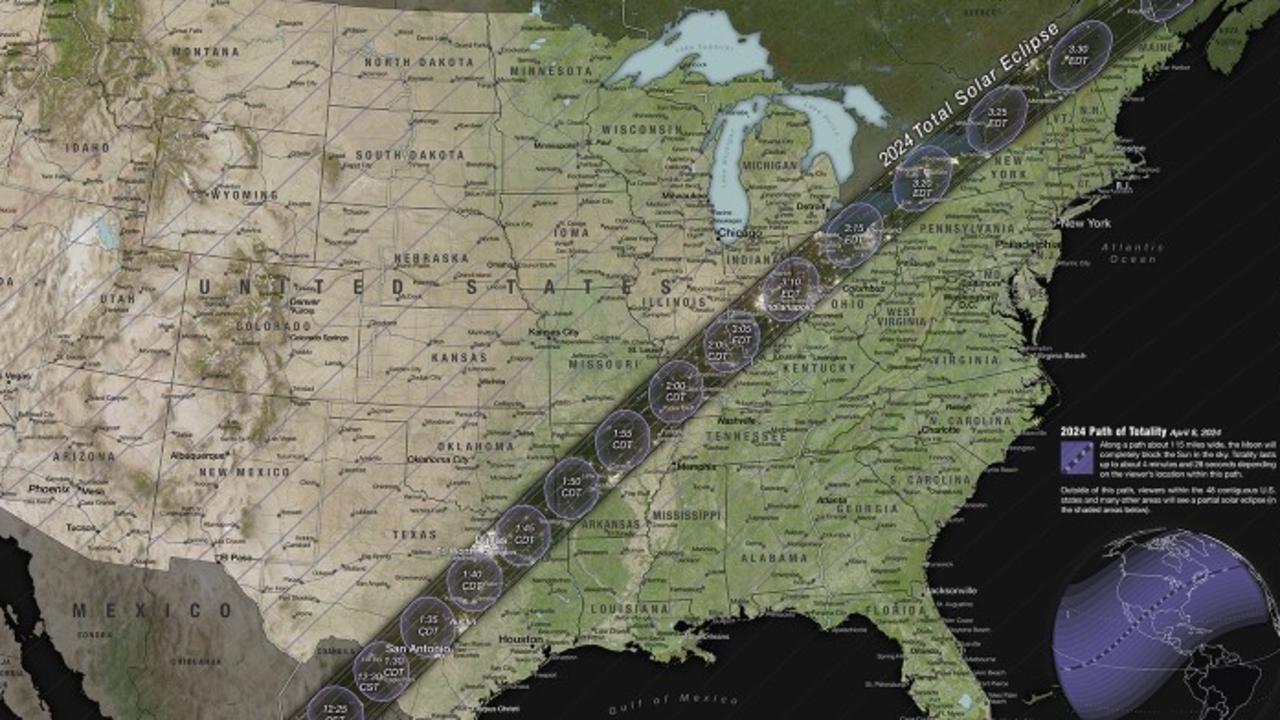NASA prepares solar eclipse livestream
Australia won’t directly experience the awe-inspiring sight of a solar eclipse this year but Aussies can still witness the momentous event. Here’s how.

Hundreds of millions of people are preparing for the awe-inspiring sight of 2024’s total solar eclipse and Australians can take part in the event — even without any direct experience of the moment.
NASA, the US space agency, has confirmed it will host an online livestream for eclipse watchers as the incredible natural event takes place across April 8, North America time, from Mexico to Canada.
A solar eclipse happens when the moon passes between the earth and the sun, blocking out sunlight and temporarily casting a zone of the earth into darkness.

“The sky will darken as if it were dawn or dusk and those standing in the path of totality may see the sun’s outer atmosphere (the corona) if weather permits,” NASA said on its website.
“The path of totality – where viewers can see the moon totally block the sun … is much wider during the upcoming total solar eclipse than it was during the eclipse in 2017.”
The totality path crosses central Mexico and then traverses across Texas, Arkansas, Missouri, Illinois, Michigan, Ohio, New York and New England, before moving across northeastern Canada.

The first major US city to experience totality is Dallas, Texas, which will enter darkness for four minutes at 1.40pm North American Central Daylight Time.
For Australians, NASA’s livestream of the event begins at 3am in NSW, the ACT, Victoria, Queensland and Tasmania, 2.30am in the NT and South Australia and 1am in Perth.
An eclipse took place in Exmouth in Western Australia last year, drawing thousands of visitors to the remarkable moment.
Australia’s next solar eclipse will happen in July 2028.




